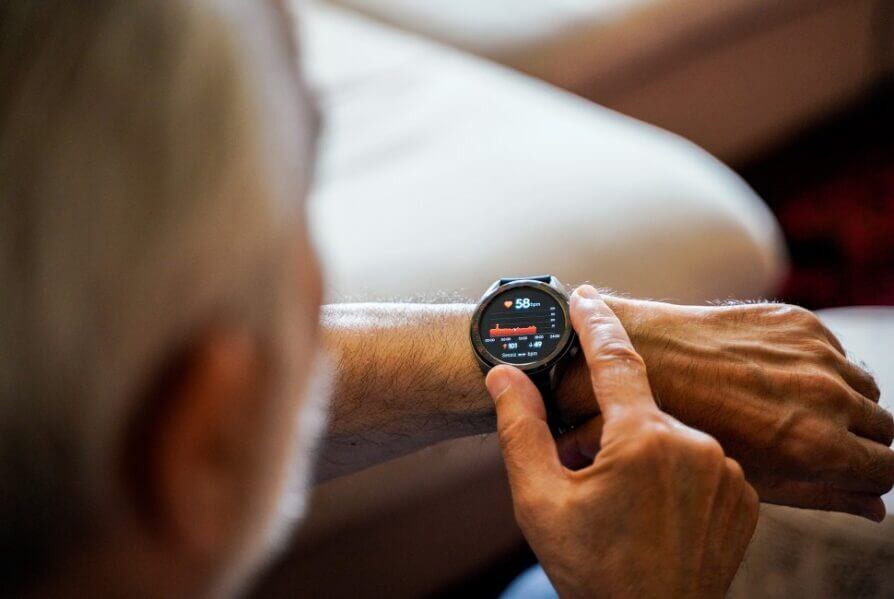A query emerged that has the potential to transform how millions assess their health: can a smartwatch identify structural heart disease well in advance of symptoms? In a recent study unveiled at the American Heart Association’s Scientific Sessions 2025, researchers from Yale School of Medicine assert that the answer is a hopeful affirmative.
Leveraging the single-lead electrocardiogram (ECG) sensors integrated into consumer smartwatches, an artificial intelligence algorithm successfully pinpointed significant types of structural heart disease, such as diminished pumping capacity, compromised valves, and thickened heart muscle. The results indicate that a wrist-worn device could eventually assist in identifying conditions that typically require the advanced ultrasound procedure known as an echocardiogram.
From 12 Leads to One: Training AI to Listen Intently
For model development, the Yale researchers instructed their AI using over 266,000 conventional 12-lead ECGs obtained from 110,000 adults at Yale New Haven Hospital from 2015 to 2023. The objective was to train the system to identify distinctive electrical patterns associated with concealed structural disease, then evaluate if similar insights could be captured from a single lead, like that found in a smartwatch’s electrical heart sensor.
Lead author Arya Aminorroaya, M.D., M.P.H., an internal medicine resident at Yale New Haven Hospital and a research affiliate at the Cardiovascular Data Science (CarDS) Lab, stated that the primary motivation was straightforward accessibility.
“Millions of individuals wear smartwatches, which are currently used primarily to detect heart rhythm irregularities like atrial fibrillation,” Aminorroaya explained. “Conversely, structural heart diseases are typically diagnosed via echocardiogram, a sophisticated ultrasound imaging test of the heart that necessitates special equipment and is not readily accessible for routine screening.”
The researchers replicated the noisier, imperfect signals that arise from actual smartwatch ECGs by infusing random interference into their training dataset. This “noise injection” enhanced the AI’s robustness against motion and environmental artifacts, equipping it to interpret wrist-based readings with near-clinical accuracy.
Following validation with hospital and population data from both the U.S. and Brazil, the team assessed the system prospectively in 600 adults who donned the same model of smartwatch for a 30-second ECG recording on the day they underwent a heart ultrasound. The average age was 62, with approximately half being women.
Early Screening from the Wrist
In comparison to the gold-standard hospital ECGs, the smartwatch-centered model performed exceptionally well. Utilizing single-lead data, the AI achieved 88% accuracy in recognizing structural heart disease and a 99% negative predictive value, indicating it was highly dependable in excluding heart issues when absent. With just 30 seconds of data, the algorithm recognized the majority of individuals with disease, attaining an 86% sensitivity score.
Senior author Rohan Khera, M.D., M.S., director of the CarDS Lab, believes that this technology could help address gaps in preventive healthcare.
“By itself, a single-lead ECG has limitations; it cannot replace a 12-lead ECG test available in healthcare environments. However, with AI, it becomes potent enough to screen for crucial heart issues,” Khera stated. “This could facilitate large-scale early screening for structural heart disease using devices that many individuals already possess.”
The researchers stress that the results are preliminary and based on an abstract shared at a scientific conference, which has yet to undergo peer review. Nonetheless, they intend to test the tool in larger populations and investigate how it could be incorporated into community screening initiatives. If validated, such technology might enable individuals in remote or underserved areas to capture ECG readings at home and transmit them to healthcare professionals for evaluation, identifying subtle heart irregularities before they escalate to hospitalization or heart failure.
Currently, the notion that a regular smartwatch could serve as a discreet guardian against one of the world’s foremost causes of death feels both futuristic and familiar. It signifies a wider transformation in medicine towards democratizing diagnostics, moving potent tools from clinics into the daily lives of individuals. What was once merely a device for step counting may soon play a role in saving lives—one heartbeat at a time.
American Heart Association Scientific Sessions 2025
If our reporting has informed or inspired you, please consider making a donation. Each contribution, regardless of size, empowers us to continue delivering accurate, engaging, and trustworthy science and medical news.
